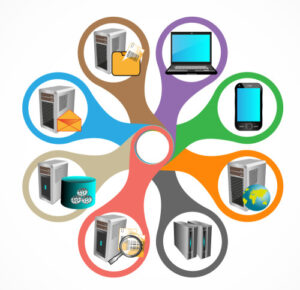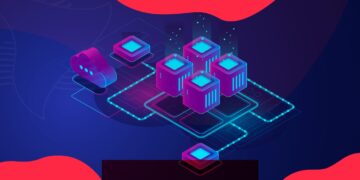Table of Contents
In this article, we will focus on Integration’s evolution and prospects. In the rapidly evolving IT landscape, integration has remained untouched. It enables systems to communicate, share data, and function cohesively.
Although the main objectives of integration have remained the same over the years, they have witnessed a remarkable evolution, shaping how businesses operate and compete in the digital world.
If you want to discover more about the world of integration and the capabilities of MuleSoft before diving into a more robust approach, you should check out our MuleSoft: System Integration and its Benefits article.
01
of 07
The Evolution of Enterprise Application Integration
Historically, organizations’ IT landscape began with a billing-centric approach where the main objective was to invoice its customers correctly. Thus, Integration started with a simple yet critical need: ensuring different IT components could seamlessly interact to streamline billing processes. This was when the needs were minimal, often limited to a handful of connections between billing systems and other components.

However, as businesses grew and technology advanced, the scope and complexity of integration expanded at the same pace.
The transition to a customer-centric approach, marked by adopting customer relationship management (CRM) solutions such as Salesforce, drove organizations to significant digital transformations that could only be enabled with an integration revamp. This period, characterized by the rise of Enterprise Application Integration (EAI), defined a new and glorious era.
02
of 07
The Rise of EAI
The rise of EAI’s period was marked by the introduction of Enterprise Service Bus (ESB) solutions and the adoption of Service-Oriented Architectures (SOA).
It was the IT department’s response to the organizational transition to a customer-centric approach, where the “old” billing monolith was broken apart and some responsibilities were delegated to more specialized systems—such as Customer Management, Charging, Billing, Product Catalogue Management, Ticketing & Problem Management, Partner Management, Order Management, and even HR and Revenue Assurance.

During this period, ESB and SOA became the backbone of integration strategies, offering the promise of standardization and a centralized approach to connecting those disparate systems.
However, while (what can now be called) the heavyweight EAI solved many challenges, it also introduced new ones. These solutions’ complexity, cost and rigidity began to clash with the growing need for agility and scalability. Businesses grappled with architectures that, although powerful, were often cumbersome and slow to adapt to rapid changes in technology and market demands.
These challenges set the stage for the next chapter in the integration saga: a move towards a more modular, agile and flexible approach.
03
of 07
The Present and Near-Future of Integration
EAI monolith that dominated the Rise of EAI era still makes perfect sense for most organizations. Nevertheless, there are others where the digital transformation and business demands are even more significant than before, and these are moving towards a Composable Integration Architecture.
Buzzwords like Agile, Cloud, Big Data, Analytics, AI, ML, Blockchain, Omnichannel, Everything-as-a-Service (and many others) are already a reality within some industries, and even the predominance of social networks as one of the most important communication means of organizations are influencing the future of EAI.
Businesses are now struggling to find solutions that can quickly adapt to changing technologies, integrate with a wide array of services and platforms, and support the dynamic needs of all these modern digital ecosystems.
Flexibility, scalability, and speed are current and future requirements for EAI that traditional ESB architectures struggle to meet.
04
of 07
New Integration Solutions
In response to these demands, a new breed of solutions is emerging. This represents a shift towards a Composable Integration Architecture (where EAI becomes modular), breaking the EAI heavyweight monolith (with its one-size-fits-all approach) into several EAI components offering specialized capabilities tailored to specific organizational needs. This shift allows the creation of highly adaptable architectures that can evolve with business requirements.
Key components of this new integration landscape include:
- API Gateways: critical control points for managing and securing access to APIs. Facilitates smooth communication between different systems, controls access from the “internet”, and allows API monetization.
- Lightweight Integration Platforms: focus on providing agile and efficient integration capabilities. Often leveraged in cloud technologies to offer scalable and cost-effective solutions.
- Event-based Solutions: enable real-time data processing and communication, supporting dynamic, event-driven interactions between systems.
- ETL Tools: continue to play a vital role in data integration, particularly in scenarios requiring complex data transformation and loading processes.
- Order Management: addressing specific operational needs, ensuring the business can manage and fulfil orders seamlessly.
- File-base Integration Tools: enabling file-based integrations such as file transfer and/or manipulation efficiently and reliably.
- RPA technologies: enable quick-wins for operations (not only) by automating repetitive and manual tasks.
05
of 07
Case Study: A Global Telco’s Transformation
A leading global telecommunications group intended to uniformize its IT landscape across several national operator companies (OpCos).
The business case for digital transformation lies around cost-saving and optimization, with the uniformization of IT components across the group and functionality reuse supported by the adoption of industry standards to ensure future-proofing.
With that purpose, the group enterprise architecture defined a set of core components that would be common within the different OpCos – CRM (Salesforce), Billing (NetCracker), Charging (NGIN CCP), OSS Stack (NETWIN, Fulfillment, SIGO, NetQ).
To enable this transformation program, the defined integration strategy relied on the adoption of a Composable Integration Architecture with the following key components/modules:
- API Gateway & Lightweight Integration (Apigee X & Integration) enabling an API-led connectivity paradigm where web-APIs come first.
- Event-based solution (Kafka) enabling real-time data integration and change-data-capture processes.
- Managed File Transfer (tailor-made platform) to cater for any of the file-based integration needs which are still a reality in several business use-cases.
06
of 07
What about a more distant future?
Beyond the composable architecture components of Integration’s present (near-future), several other emerging technologies worth considering will probably reshape its future.
- Serverless computing represents a paradigm change in how applications are built, deployed, and managed, offering a way to execute code without the need to manage the required infrastructure.
- Being explored for several different purposes, Blockchain Technology may also affect how we see integration in the future due to its capabilities to achieve interoperability and trust in multi-party processes – especially in scenarios requiring secure, transparent and tamper-proof transactions between different entities.
- Artificial Intelligence and Machine Learning are also being considered and used to automate and optimize integration processes, reducing the complexity and manual effort involved in integrating different systems.
- Although still in its early stages, quantum computing has been recognized to offer astronomical computational power that would enable solving complex problems. It can be relevant in areas like cryptography and large-scale problems, opening infinite possibilities for real-time analytics use cases.
07
of 07
Conclusion
As we look towards the future, it’s clear that the field of IT integration is undergoing a profound transformation. Moving away from heavyweight ESB solutions towards more modular, flexible and scalable platforms reflects a broader trend in technology: the shift towards systems that are powerful, adaptable, user-friendly and aligned with the fast-paced nature of the digital economy.
By embracing these new methodologies, businesses can ensure they are well-equipped to navigate the complexities of the digital age, fostering innovation and driving success in an ever-changing world. If you’re ready to do just that, get a look at our Integration services to start your journey.






